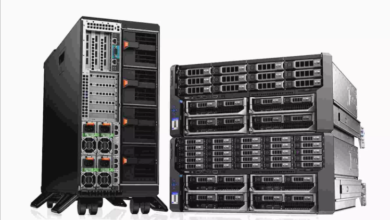Understanding Traditional DLP: A Comprehensive Guide

Introduction
In today’s digital landscape, data is one of the most valuable assets for organizations. Businesses across industries generate, process, and store massive amounts of sensitive information, from intellectual property and trade secrets to personal customer records and financial data. Protecting this information is not only a business imperative but also a compliance requirement in many sectors. One of the long-standing methods for safeguarding sensitive data has been traditional Data Loss Prevention (DLP).
Traditional DLP has existed for nearly two decades and remains a foundational technology in many enterprises. However, as the cybersecurity threat environment has evolved and cloud adoption has accelerated, the effectiveness and relevance of traditional DLP have come under scrutiny. This article provides a detailed exploration of what traditional DLP is, how it works, its benefits and limitations, and why organizations are rethinking their approach to data security in the modern era.
What is Traditional DLP?
Traditional DLP refers to legacy data loss prevention technologies designed primarily to monitor, detect, and block the unauthorized transmission of sensitive data. The core purpose of traditional DLP systems is to prevent confidential information from being leaked—whether accidentally or maliciously—outside an organization’s perimeter.
Key Characteristics of Traditional DLP
- Perimeter-Focused Security
Traditional DLP systems were developed when most corporate data resided within on-premises servers and endpoints. The focus was on preventing data from leaving through network channels, email systems, or removable media. - Policy-Based Controls
These systems rely on administrators creating predefined rules and policies. For example, blocking credit card numbers, Social Security numbers, or files with specific patterns from being emailed externally. - Content Inspection
Traditional DLP uses pattern matching, regular expressions, fingerprinting, and keyword lists to identify sensitive information in motion, at rest, or in use. - On-Premises Deployment
Traditional DLP tools are usually deployed within the organization’s local IT infrastructure and require extensive configuration and maintenance.
See also: Your Complete Technology Partner: A Wide Range of Solutions for Every Need
How Traditional DLP Works
Traditional DLP operates by scanning and analyzing data in three main states:
- Data in Motion – Monitors data moving across the network (e.g., email, file transfers, instant messaging). If sensitive content is detected, it can block or quarantine the transmission.
- Data at Rest – Scans storage locations such as file servers, databases, and endpoint devices to identify where sensitive data is stored.
- Data in Use – Observes data being accessed on endpoints, for example when files are copied to USB drives, printed, or screen-captured.
The system then enforces policies, which may include:
- Blocking the action entirely.
- Encrypting data before transmission.
- Quarantining suspicious files.
- Alerting administrators for review.
Benefits of Traditional DLP
Despite its limitations, traditional DLP has provided important advantages for organizations:
1. Data Leak Prevention
At its core, traditional DLP is effective at blocking unauthorized sharing of sensitive information, particularly through known channels such as email or USB devices.
2. Regulatory Compliance
Many industries, such as finance and healthcare, face strict regulations like HIPAA, PCI DSS, and GDPR. Traditional DLP helps demonstrate compliance by enforcing data handling policies.
3. Policy Enforcement
Organizations can set clear rules about how sensitive data should be accessed and transmitted. This reduces the likelihood of accidental leaks by employees.
4. Visibility into Data Movement
Traditional DLP provides insights into how and where sensitive data is being used across the network, enabling better risk management.
Challenges and Limitations of Traditional DLP
While traditional DLP laid the foundation for data security, its limitations have become more apparent in the modern digital ecosystem.
1. Complex Deployment and Maintenance
Traditional DLP requires extensive setup, including the creation of data classification rules and policy libraries. Maintaining these systems demands constant updates, which can be resource-intensive.
2. High False Positives
Pattern-based detection often misidentifies benign data as sensitive, leading to frequent false positives. This not only frustrates users but also overwhelms IT teams with unnecessary alerts.
3. Limited Cloud Coverage
Traditional DLP was built for on-premises environments. With the rise of SaaS applications, cloud storage, and remote work, these tools often struggle to provide visibility into data outside the corporate perimeter.
4. User Productivity Impact
Blocking legitimate data transfers due to overly strict policies can frustrate employees and hinder productivity.
5. Insider Threat Blind Spots
Traditional DLP is not well-equipped to distinguish between normal user behavior and malicious insider activity, such as intentional data exfiltration disguised as legitimate work.
Traditional DLP vs. Modern Data Security Approaches
As organizations have shifted toward cloud-first strategies, remote work, and digital collaboration, traditional DLP has been challenged by modern data protection solutions.
| Aspect | Traditional DLP | Modern Data Security |
| Deployment | On-premises, network-centric | Cloud-native, SaaS-friendly |
| Detection Method | Pattern matching, keyword rules | Context-aware, behavioral analytics, AI/ML |
| Data Coverage | Primarily on-premises | Cloud, hybrid, multi-device |
| User Experience | High false positives, interruptions | More adaptive, reduced friction |
| Threat Coverage | Accidental leaks, basic exfiltration | Insider threats, cloud misconfigurations, APTs |
Use Cases for Traditional DLP
Despite its shortcomings, many organizations still deploy traditional DLP for specific purposes:
- Preventing Accidental Email Leaks
Blocking employees from sending sensitive files or records to unintended recipients. - Protecting Intellectual Property
Safeguarding documents containing trade secrets, design blueprints, or proprietary code. - Controlling Removable Media Usage
Preventing unauthorized data copies to USB drives or external storage devices. - Regulatory Audits
Demonstrating compliance with data handling policies during audits and assessments.
Best Practices for Implementing Traditional DLP
Organizations still using traditional DLP can maximize its effectiveness by following key best practices:
- Start with Data Classification
Identify and categorize sensitive data types before creating policies. - Balance Security and Usability
Avoid overly restrictive policies that disrupt workflows. - Regularly Update Rules
Continuously refine detection rules to reduce false positives and adapt to new data types. - Combine with Other Tools
Pair DLP with endpoint detection, encryption, and cloud security tools for layered protection. - Employee Training
Educate employees on data handling policies to reduce accidental violations.
The Future of Data Protection Beyond Traditional DLP
While traditional DLP continues to play a role, the cybersecurity landscape is evolving toward data-centric and context-aware solutions. Artificial intelligence, machine learning, and cloud-native architectures are driving new approaches that address the gaps left by legacy DLP.
Emerging Trends in Data Security
- Cloud Access Security Brokers (CASB): Extending visibility into SaaS and cloud environments.
- Zero Trust Security: Shifting from perimeter defense to identity-centric models.
- AI-Powered Analytics: Reducing false positives and detecting anomalies in user behavior.
- Unified Data Security Platforms: Integrating DLP with insider threat management, encryption, and governance.
Conclusion
Traditional DLP has been a cornerstone of data protection for decades, providing organizations with tools to enforce policies, comply with regulations, and prevent sensitive data from leaving the corporate perimeter. However, as businesses embrace cloud technologies, hybrid work, and more sophisticated collaboration tools, the limitations of traditional DLP have become more evident.
Organizations still benefit from traditional DLP for on-premises environments, compliance requirements, and basic data protection use cases. Yet, for comprehensive security in today’s dynamic environment, enterprises are increasingly turning to modern, cloud-native, and AI-driven data protection strategies.
Ultimately, traditional DLP is not obsolete, but it is no longer sufficient on its own. Organizations must evolve beyond traditional models to protect sensitive information wherever it resides—inside the network, in the cloud, or on the move across devices and geographies.
FAQs on Traditional DLP
1. What is the main purpose of traditional DLP?
Traditional DLP aims to prevent sensitive data from leaving the organization’s network through unauthorized channels such as email, removable devices, or file transfers.
2. Does traditional DLP work in the cloud?
Traditional DLP was not designed for cloud environments and often struggles to provide visibility into SaaS applications or cloud storage. Modern DLP and CASB solutions are better suited for this purpose.
3. Why does traditional DLP cause so many false positives?
Because it relies heavily on pattern matching and static rules, traditional DLP can misidentify harmless content as sensitive data, leading to unnecessary alerts.
4. Is traditional DLP still relevant today?
Yes, traditional DLP remains relevant for compliance, protecting on-premises data, and preventing accidental leaks. However, it must be complemented with modern tools to address current threats.
5. How is modern DLP different from traditional DLP?
Modern DLP leverages AI, machine learning, and context-aware analysis to reduce false positives and extend protection to cloud and hybrid environments, unlike traditional perimeter-centric models.






